We continue our "League of Pros" series: stories of people who work in our football and make it better.
On International Women's Day, the hero of this column is Nadezhda Smirnova, who works for FC Ufa as a rehabilitation coach. Since 2017, this position in the main team of Ufa has been occupied by women. Previously, Maria Burova and Lilia Sidorkina worked here, but both now work at Zenit St. Petersburg (Burova with the main team, and Sidorkina with the second).
Smirnova came into football in 2020, but she had already been involved in sports. She became a master of sports in alpine skiing and got into the Russian national team, but because of two injuries, she ended her career and studied to become a rehabilitation coach. After working with patients from different sports, Smirnova wanted to try herself in a team and chose Ufa, despite offers from other clubs.
“I was wanted to switch from downhill skiing to snowboarding”
"I was born in Petropavlovsk-Kamchatsky, and my childhood was active, memorable and athletic, I remember snow, mountains and volcanoes. In the summer, at children's camp, we had ski camps on the volcanoes. It was very beautiful: around +20-25 degrees, it was warm and comfortable, we were skiing in the snow. In winter, we already trained down in the city.
In Kamchatka, earthquakes often occur, but as a child I was not so afraid. Usually you just wake up and put the books back on the shelf because they fell, or you sit and feel the tremors, and if they are stronger, you can stand in the doorway, but I do not remember such powerful ones. However, when I was flying home for the New Year a few months ago, there was a small earthquake at night, and after becoming unaccustomed to it again I was afraid.
In Kamchatka, alpine skiing and biathlon are common, but the choice fell on alpine skiing, because my father – like my older sister Yana – was engaged in it professionally, and they had established contacts with the coaching centre. As my parents told me, I was put on skis at the age of three, but only started moving at five; before that, I just stood there. At first, my parents took me to the sports centre as my sister, because we went to the same school together. Then I was transferred to another centre, where my dad worked as the chief mechanic of the cable cars.
When I was around 12-13 years old I tried snowboarding, and even I was wanted to transfer from alpine skiing. Back then, snowboarding was not developing as well as it is now. It was just beginning, but there were good prospects for performance and getting to the World Cup. Only the coach was very upset that I was still engaged in another sport and distracted from the main training, so I quickly lost the desire.

At the age of 15, I was invited to the Russian national team, and I moved to Moscow alone to attend the Olympic reserve school. It was insanely hard for me the first week, I had tears in my eyes every night. When you live with your family, you come home and know that they are waiting for you there, you can always talk, ask for advice or complain about something. It's psychologically difficult when you come to another city and don't know anyone, and you need to make friends with new guys in the team as well as the coaching staff. Then it became normal, I got used to it, and there was no problem as such.
“After the first injury, there was a big psychological barrier”
I received the first serious injury at the training camp in Austria, I got torn anterior cruciate ligament. No one tried to dissuade me from finishing with alpine skiing even then, but there was a question of how to recover and do it correctly. To be honest, at that time there was no medical support after the injury: I stayed in Germany until the end of the visa and spent a month with the team doctor. Then I was sent back to Moscow, and then I did everything that came to mind: something was suggested by the coach from the Moscow national team, something was taken from the guys who went through the same thing. Even when I was injured, the team coach called and said: "You have six months to recover, because in June you are going to the training camp with the team."
After the recovery, I had a very big psychological barrier: I didn’t finish about 80 percent of all starts. I wasn't sure about my leg, because I didn't fully restore it. Now, as a person who works in rehabilitation, I understand that it was necessary to work and work. There was a lot of pressure on me from the coaching staff. I was told: "You'll be out of the national team if you don't make it." Plus, my parents pressed me, because they were worried that I would be kicked out. They wanted to support me in this way, but it was still perceived negatively. As a result, I was removed from the national team, and I continued to perform with the Moscow team.
I was very motivated to come back. I worked very hard, with a much higher workload than there was on the national team. This led to results: I won the starts one after another, including the overall standings of the Russian Cup [in the 2012-13 season – Premierliga.ru]. Then there was an offer to return to the national team, but at the training camp in Austria there was a second injury. We went to the mountain, but I forgot the liners in my shoes. I was sent back down, and I had already decided that I would not go back and go running. I ran a fairly large cross race, after which my knee swelled very much. The swelling did not go away, the knee did not bend. I came to Moscow where a doctor observed me. My knee was punctured, and a lot of fluid had accumulated there.
I continued training as we just had a break between training camps. With the load, the situation was repeated: in two weeks, my knee was punctured six times – every two or three days. The doctor said, “That's enough, let's see what's inside.” I had an arthroscopic operation, and it turned out that there was practically no cartilage, the arthrosis was quite high. I then had an operation and was told if I continued to compete at a professional level, the joint would most likely be replaced, because it wouldn’t withstand the load.
I had to walk on crutches for a month. It was a shock – I was already supposed to be going to the next competition. I thought I would try again to recover and return. At some point, my coach called me at the hospital – the staff were not even aware that I had undergone a second operation – and simply put me in front of the fact: "We are flying to the next stage of the Russian Cup in a week." I answered: "I just had an operation, I have to walk on crutches for a month." He said, "Yes? What happened?" I explained, and they said, "Oh, well, get well." That's it, no one else called.
I was very offended, and it was on that day that I decided that I would continue my studies at the university. At that time I was already studying my specialty, so I understood what rehabilitation was and what was missing in our country, that athletes are simply abandoned when it comes to recovery. This was the impetus to end my sports career and get into work.
At first, I was uncomfortable in the sense that we had been constantly at training camps and flying, and here I was sitting in one place and not going anywhere. I needed a change of environment. This routine which I arranged for myself – study, home, training – somehow pressed on my mind. For the first month, I often dreamed of performing at night, and then I began to have new hobbies and worries. However, even now, I periodically take out a folder and a huge bag with medals when I come home and I look at all the certificates.
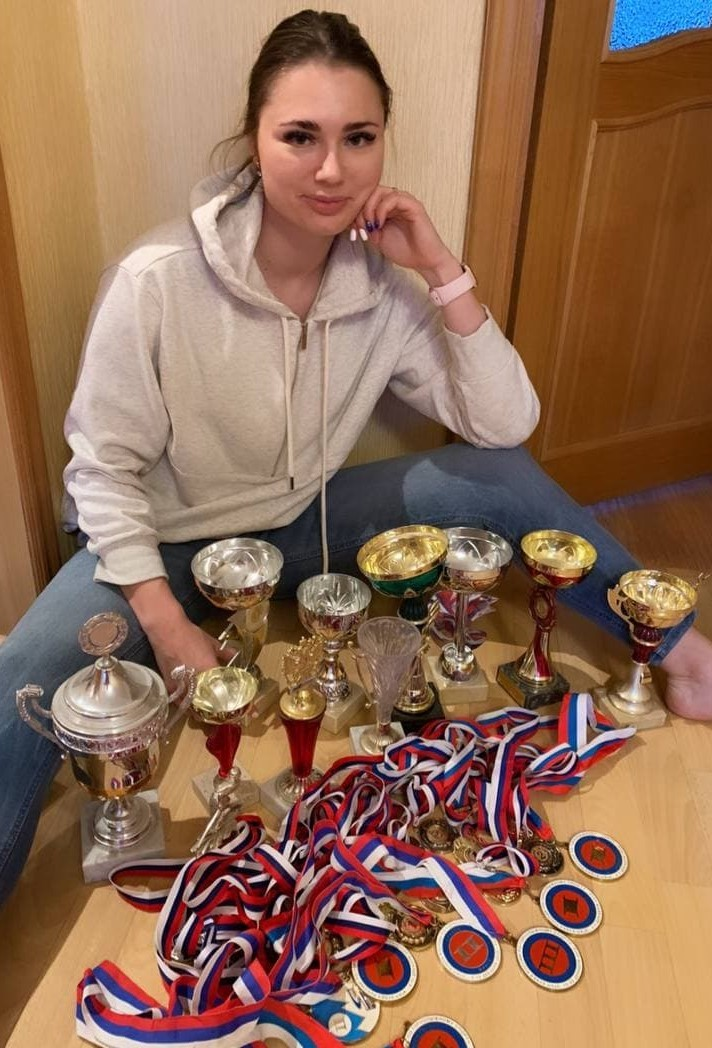
“In Europe, the entire rehabilitation process is twice as fast as in our country”
My family has many friends of doctors, and when I chose a profession, they said that the field of sports rehabilitation was only developing in Russia – it was practically non-existent. When I entered the university, I did not really understand what I would do, what rehabilitation was in general, or where I would work. When I went through the recovery after two operations, I already realized how great it was that I had made this choice. I initially really wanted to go into higher medical education, but when you are at a training camp for a month and the break between them lasts a week, it is very difficult to combine the two, so I chose rehabilitation.
Only when I first came to work in a rehabilitation center, and I was given my first patient, I realized that I lacked the knowledge that was given at university. This is a good base of theory, but as such we did not have any practice. I had to look for an approach to patients in the process, and to think about which rehabilitation direction was closer to me. With my first experience, I got the ability to communicate with people, because there are different cases. Some have a serious condition, others less so. I learned how to choose words, in which ways to restore their health, so that the person was better.
I also read literature, consulted with the doctors I worked with, then attended advanced training courses and conferences, and went to Germany for an internship. In Europe, in general, the whole process is twice as fast as in our country. They are more confident in their work from a surgical point of view and from the first days actively begin recovery. Our doctors are very worried about their work and greatly stretch the early recovery period. Our sports stars are often sent to Europe for surgery, and they undergo the initial stage of rehabilitation there. Abroad, there is a comprehensive approach at once: physical therapy, mobilization, and motor activity are connected.
We have it, but not everywhere yet. Some colleagues already in the early stages refuse long-term use of orthoses and additional support - even crutches - so that a person can quickly begin to regain the ability to walk. Many people realize that it is important to start activity from the first days, that now there is even such a thing as pre-rehabilitation - the beginning of rehabilitation measures before the operation - which is also very important and helps to reduce the recovery time after it. Now everyone is actively trying to implement it.
I always say that rest never heals, especially if it is a professional athlete. Let's say it's not clear to me when they say: "Two weeks of rest and start recovery." In two weeks, athletes lose their shape very quickly, then they gain it longer if they do not start training immediately. Even if the leg is injured, there are still hands, back, abs, a healthy leg, where the load can be given. They will not be as intense, but there is still a progressive load: if the recovery takes place in a pain-free phase, you can add movements, gradually gain momentum, complicate the exercises and reach a higher training level.
“I have always tried to allocate more time for athletes, staying after work”
Many of our specialists know Maria Burova, because she speaks at various conferences. We follow her work and adopt her methods in practice. She is an open person, always very calm and offering detailed answers to questions if she can. Among doctors, I would single out Vasily Aleksandrovich Stroganov. He is my colleague, a surgeon and traumatologist. He has a lot of interesting information on the surgical treatment of athletes.
I would put Andrey Andreevich Abramov, a doctor for the Russian women's national rugby sevens team, at the top of my list [In 2016, he was a rehabilitation doctor of the Russian national rhythmic gymnastics team at the Olympic Games in Rio de Janeiro – Premierliga.ru]. We worked with him at the FMBA [this is the Federal Research and Clinical Center of the Federal Medical and Biological Agency in Moscow – Premierliga.ru], and he gave an impetus to the understanding that I want to work in rehabilitation with athletes. Members of the Russian national teams in various sports and ordinary patients were treated at the FMBA. I have always tried to devote more time to athletes, even staying longer after work to work out with them; half an hour of exercise a day was not enough for them.
The FMBA management were not very impressed, because the athletes were there on a quota and did not bring in any huge sums; it was necessary to earn it from patients who did not relate to sports and paid for the procedures. When Andrey Andreevich came, he saw my desire and began to transfer athletes to me for rehabilitation, and gave my colleagues ordinary patients. With him, I began to move up the career ladder. I also got to Ufa thanks to him.
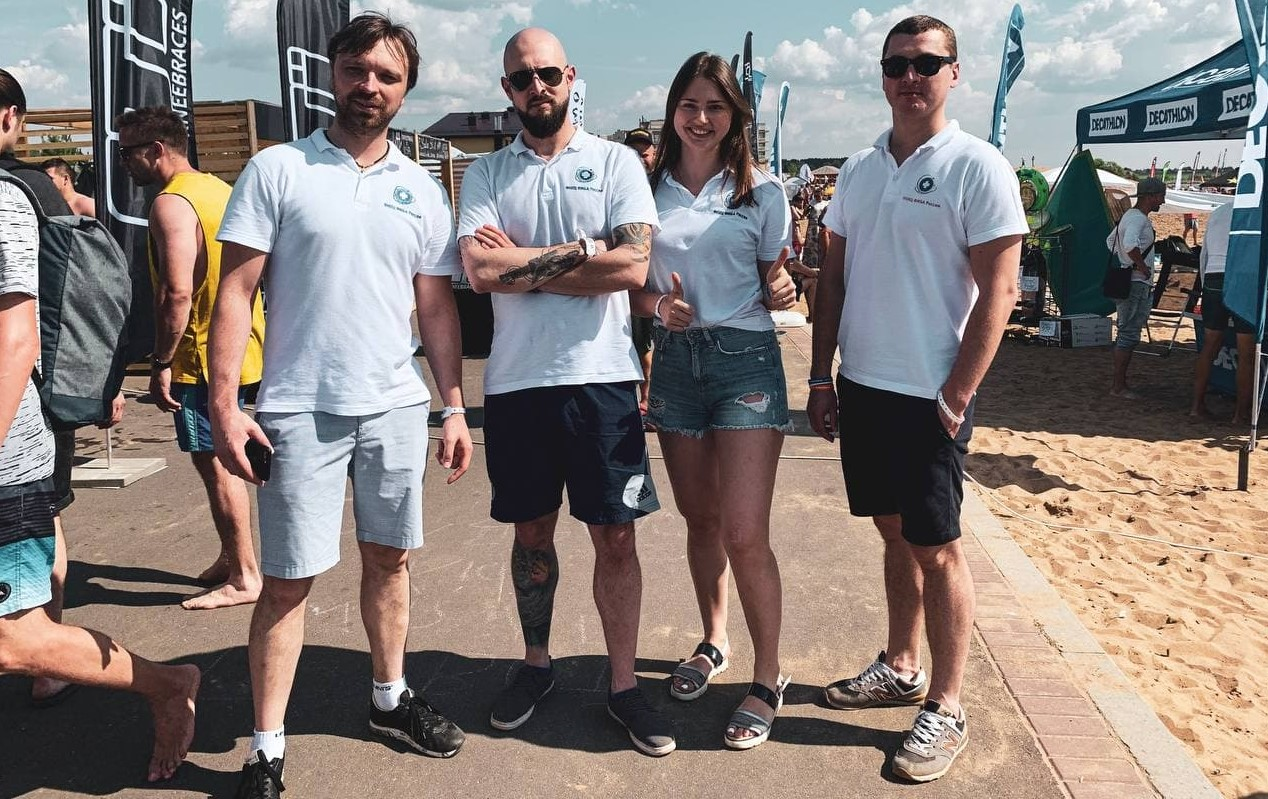
“Some people think about retirement, but you bring them back”
My first experience of working as a rehabilitation therapist was at the Dikul center in Moscow, a private clinic. For students who study at the university, this is a good starting base. For example, it helped me find a diploma topic in the last year of the bachelor's degree. When I graduated from the university, I went to the research medical center of Rehabilitation and Balneology on Novy Arbat. There is a lot of robotic technology and different areas of work: neurology, cardiology and traumatology. At the same time, I realized that I wanted to work in traumatology.
The next place of work was FMBA. I had the idea of going to work there, even when I was undergoing a medical examination there. Initially, cosmonauts were sent there for rehabilitation after flights, now they treat cosmonaut-heroes of the Soviet Union. I even worked with Oleg Novitsky, although he was injured on the tennis court, and our rehabilitation did not take place from beginning to end, but only the final stage. We ran, did a change of directions. Everything was fine and he recovered.
Among the athletes who came to me for rehabilitation, for example, was gymnast Daria Spiridonova. At first, they tried to restore her conservatively, but they realized that they were unsuccessful. Then they operated, and even before the operation, she played a wedding with a broken ankle. However, Daria was always ahead of schedule. When she was recovering from surgery, she quickly got off her crutches and tried to do something, recovered and returned to the sport, but recently announced that she had finished her career.
It often happens when an athlete with an untreated injury begins some kind of activity. We are psychologically resistant to this, because athletes do not sit still. There were guys who stood in the football goal the second week after their operation. I said, “What gate? We're still walking on crutches.” They answered me: “We just got up to stand.”
Rehabilitation in principle is long, especially if there was an operation involved, and the athlete does not function normally for a long time. At this point, you still act as a psychologist. You need to support and explain matters, so that they are patient, because many people are also dealing with pain through their recovery. This is normal in the early stages. Some even consider quitting sports when it seems to them that it won’t get better, but you bring them back. You explain that at first it hurts, and then everything will get better and better.
There is the example of Dasha Kan. She was a member of the national climbing team, and right after each other, she suffered injuries to her ankle, one shoulder, then the other. She was very worried that nothing was helping her, she was suffering one injury after another, and that it was already necessary to call it a day. As a result, she recovered, and began to climb slowly after her injury.
There was also a girl who did crossfit. She initially had a condition that she needed to recover from faster than usual as there were competitions ahead. She just had an operation, and immediately started working with weights. It was necessary for the specifics of the sport, so that the muscles did not suffer and were in good shape. However, we understood that it was very early: one wrong move, and the transplant could be over.
Everything was under the control of a doctor, and we constantly did ultrasound and MRI scans. After four and a half months of recovery, she performed at the competition and took what was needed. Only here the question is that some cope with the pace, others don’t; you need to adhere to some framework and try not to force early deadlines. Only then, when the healing process has passed, you gradually add the load and go to the level that was before the injury, and most often even better.
“We were called to Lokomotiv, hockey and rugby sevens, but Ufa reacted the fastest”
During the first wave of coronavirus, the centre began to work in a different direction. Breathing exercises were more prevalent with people who had suffered from these diseases or were in the hospital at that time. There were some paid services, more ordinary people came, and very few athletes were laid down. Plus Andrey Andreevich left to work in rugby, so I had even less interest. The relationship with the management also changed: I wanted to develop in the field of sports, and the authorities, probably, were more focused on earning money. At that moment, I realized that I had outgrown this place, and I wanted to join a team; I had always dreamed about it.
Because of the possible redundancy, I was afraid. I didn’t understand where to go next, and even thought about not leaving. I was told: "You are a good specialist, you will not be left without a job, you will definitely have many other interesting offers." I thought I'd give it a try, so I quit. On the same day, I received several interview offers, both with teams and in other rehabilitation centres.
There was an option to go to Lokomotiv Moscow football club, but there were several applicants, and I had to wait until everyone had been interviewed - about a month, if not more. Then I went to the CSKA hockey, and was called by CSKA women's sevens rugby, as I had already worked on a voluntary basis with the girls during the pandemic. Ufa reacted the fastest, so the choice fell on football. Andrey Andreevich also helped me with this. He knew about my desire to work in the club, talked to Burova and asked whether there was an opportunity to arrange something with the team. Maria worked at Ufa, so she probably found out from the authorities whether they needed a rehabilitologist. Only then did they contact me.
Before, I didn't follow football, other than watching the matches of the Russian national team. My dad is very fond of sports, and we always had a sports channel at home. Now I watch RPL matches, even when Ufa are not playing. I constantly monitor the latest standings; it's really interesting for me, and I need it for work.
The team accepted me well, always helping me and listening to my suggestions for work and setting a training plan. There are working moments when people don’t agree, but they are always present and discussed. The players and the coaching staff are all responsive. Head coach Rashid Rakhimov is sympathetic as a professional in his field. When he came, I was really inspired by his work, and the way he puts it. His direction is closest to me.
“Every football player will not be happy to go to rehabilitation – this is torment for them”
The training plan is always made by the head coach together with the entire staff, while I only do prevention with the general group – this is a warm-up 15 minutes before the main training session. If an athlete has recently joined the general group, we come to the stadium even earlier and start the lesson an hour before the start of training. The first few weeks after the injury carries a big risk of relapse, so we work extra even when the athlete is already in the general group.
We regularly communicate with the coaches about the injured players about who can play and when, and who has what kind of injury. We also talk about general issues, including training: what exactly will the general group have, so that I understand whether a particular player is able to go out or if it will be too early for the workload. We can discuss some individual players. If they have a problem, they immediately approach themselves; no one will suffer unnecessarily.
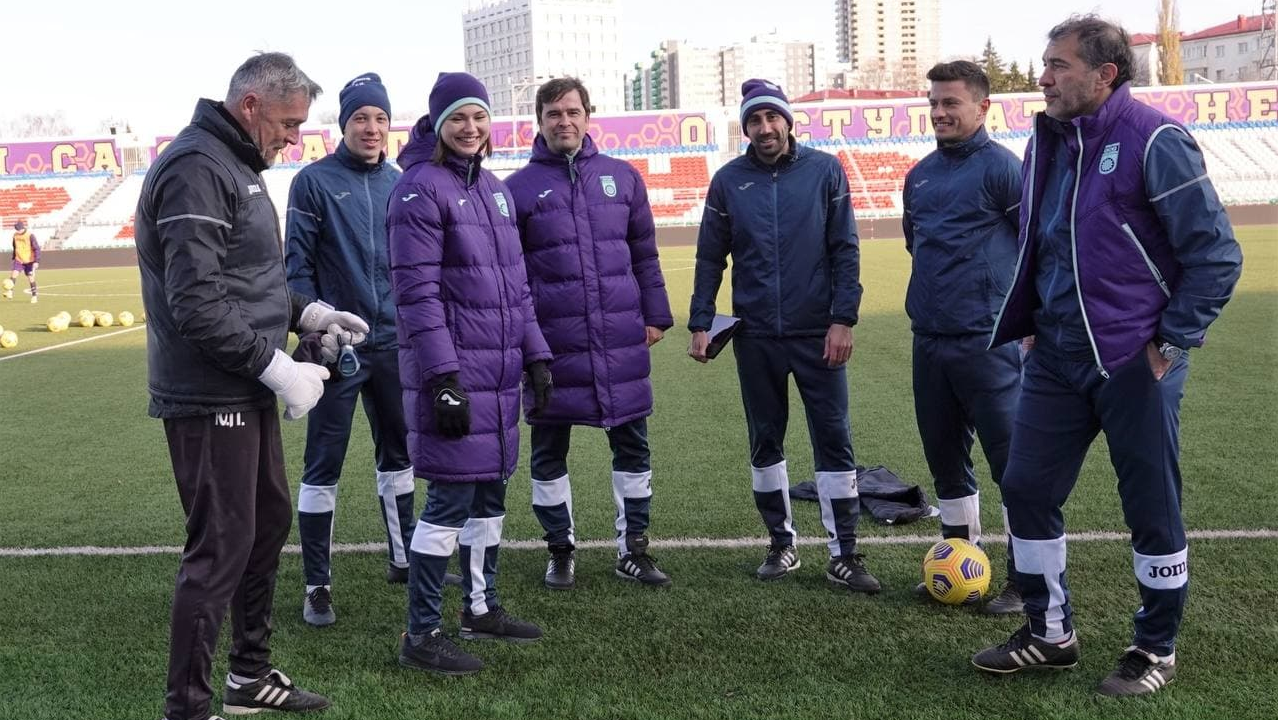
Initially, the injured player goes to the doctor. He is examined, diagnosed, then a treatment and rehabilitation plan is built, and I work with the player as a rehabilitation coach in the gym and on the field. Physical therapy is also prescribed. As the athlete progresses and adapts to the training load, I already communicate with the physical training coach Ryan Muller and we make a program together. Perhaps the athlete can already participate in the team warm-up on the pitch, but then he has a gradual individual program until he can enter the general group.
We always say to athletes: we are not enemies, no one will keep you longer than we should. If you are ready, you will be taken back to the general group with open arms. It's hard for the injured players at first. They see that the guys are training on the pitch with the ball, but they can't touch it yet, because they need to do something completely different like more gym and strength training. They don't like it at all. There is a constant struggle, an explanation of why we need to train the abs, or upper shoulders, when they play with their feet. In any case, it all leads to the same result; the guys recover, go out on the pitch and continue to play.
Since I have been with the team, there haven’t been so many injuries. In general, no football player is happy to go to rehabilitation, because for them it is a torment of hard labour, with a specific load that they basically never do. They don't often do this kind of training, so when players get injured and they need to go to practice with me, they understand that in order for this to end, they need to recover faster.
“Rakhimov and I are like-minded people”
We have a chat where I throw in information about training sessions with questionnaires on the state of players. In the winter, new guys came, and we had a stabilization training session with them. The next day, I went to the guys to explain about the questionnaire that you need to fill out every day, and they told me that my number had already been blocked – of course, as a joke. For them, my training sessions are too heavy, but it still won't save them!
At the winter training camp, the guys had two training sessions a day. This is also stressful for them, but this is the sport. I had three training sessions a day in alpine skiing, and exercise at six in the morning. When I first came to the team and saw that the players trained once a day on the pitch, it was a big question for me. After the arrival of Rashid Mamatkulovich and Ryan, we were like-minded. Together we agreed that in addition to one training session on the pitch, the guys still need a functional and conditioning session. Naturally, all this is tied in with the schedule, but for each individual a program is needed to prevent injury and strengthen the body. We then conduct certain tests, look at their movements and adjust them if necessary.
Of those players with whom I have worked more, I can mention Konstantin Pliev. He always performs exercises responsibly, and I tell the guys who are recovering about him. Grigory Morozov did not recover, but you can always see him before and after training in the gym - at the training camp this was different. Aleksey Nikitin always fulfills the training plan, even arriving earlier to report back and thank me.
Filip Mrzlyak and Jamal Tabidze also have a professional approach. With Dmitry Sysuev, there is an eternal struggle with why we do this or that, probably because he has been undergoing rehabilitation with me. In all sports, some are a little lazier than others, but in general all the guys at Ufa do well.
“I worked with patients voluntarily, then they themselves asked how much the course costs”
The work takes up most of my time, first with the guys from the team, then with people in remote rehabilitation. Plus, I additionally study German and English, and now I am taking a course from various foreign specialists from team sports. You can say that there is no free time at all.
I started recruiting clients for individual rehabilitation as soon as I started to run my own Instagram account about my job. People from different parts of our country – and even from abroad – have written to me that they don’t have the chance to undergo rehabilitation in their city, or do not have it at all, and they’d like to ask for help, find out what exercises they should do to recover.
Gradually, I began to form for myself some kind of remote work plan that can be done online. At first, I doubted the effectiveness, since I had always only worked with patients in person, but when the first results began to appear with people really recovering and returning to their activities, I realized that this works and it is possible to reduce the time visiting hospitals and clinics, especially at a time when everything is closed and there is no way to get anywhere at all. It saves a lot of money. Both athletes and ordinary people write to me, but recently there have been more athletes, in particular from rugby or football, because recently I have worked with teams from these sports.
While there has been time, I’ve done this voluntarily, then the patients themselves began to ask how much the course costs. I was helped to make a price list; we compared it with prices in clinics so that it was cheaper and affordable, otherwise what would be the point? Many people choose the remote method due to the fact that it is expensive or inconvenient to undergo treatment in clinics.
Let's say I have a price for a month of working together, and in the clinic you give, roughly speaking, two thousand for this, two thousand for another, overall it comes out even more expensive than paying once a month. I always try to meet people halfway if it is difficult to pay the entire amount at once: we can split the payment into parts, plus I have made cheaper packages where I am in touch with the patient once a week, not 24/7.
At first, I didn't think about running Instagram in the professional sphere. I just shot the results of my work and put them in the feed without any second thoughts. Then a feature appeared on Instagram where you can view saved photos; I realized that there are a lot of them, although I did not promote my page in any way. My friend said: "Why don't you post exercise sessions, it's very much in demand."
I thought that I could start posting some useful information so that people understand that rehabilitation is not just breathing exercises with a stick, as many people imagine, but is full-fledged classes that can also be sports. The workload is no less than in the gym. Many people, after they finish rehabilitation, adopt something in their training program, or pass it on to other athletes or coaches.
“The global dream is to work in Europe – for this I study languages”
Working with a team has always been a dream for me. First, it is a sports experience with various injuries. We move away from usual movements, and adapt them for a sport - in this case, football – and come up with new modifications. Secondly, it is a new and useful acquaintance with the medical, coaching and administrative staff. You are always with the team, going to training camps with them and supporting them. I feel comfortable. I used to be in the athlete’s place, and now I'm just on the other side.
Now my global dream is to work in Europe, and that's why I'm learning languages. Ideally, I also want to get into the team to see how they work there, and learn something. It would be very cool and interesting to get this experience. I was told that everyone who comes to Ufa is focused on developing. Of course, we all want to grow, but now everything suits me here, as the initial experience of working with a football team, then we will see how things will turn out. So far, our task is to rise higher and improve our game.
If a good specialist comes to work in the team, there is no difference whether he is male or female. You will be treated based on how you apply yourself in this job, as a specialist or, roughly speaking, a girlfriend. We can always joke with the guys, or talk about serious topics. Of course, in any case, you remain the only woman on the team for them: they will help you more, hold the door, and sometimes pay for coffee. So if I'm asked if a woman should join a men's team, I'll say, ‘Yes, of course.’ There's nothing wrong with that. If you position yourself correctly, there won't be any problems."
Photo: FC Ufa; Nadezhda Smirnova's personal archive



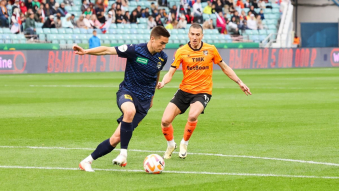
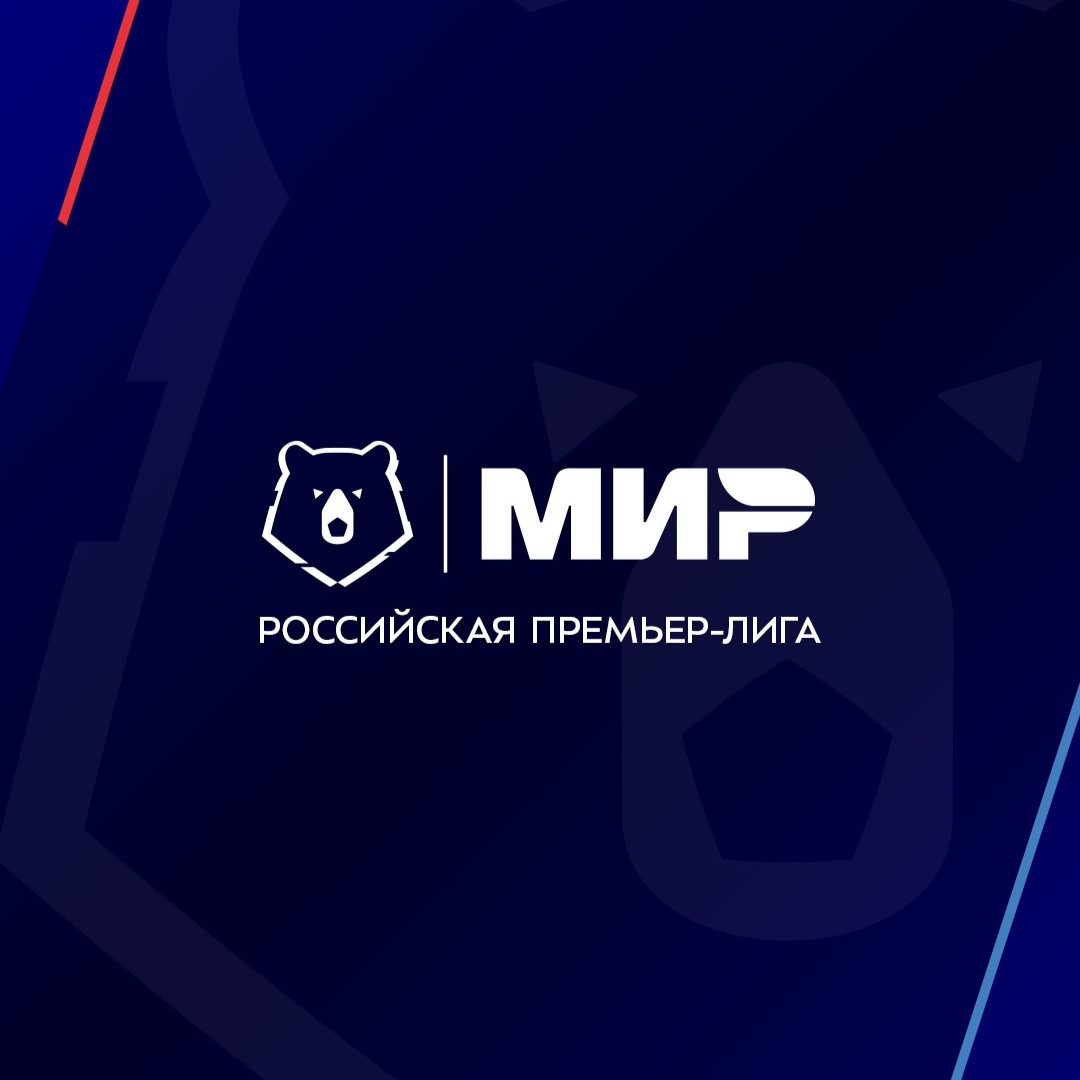
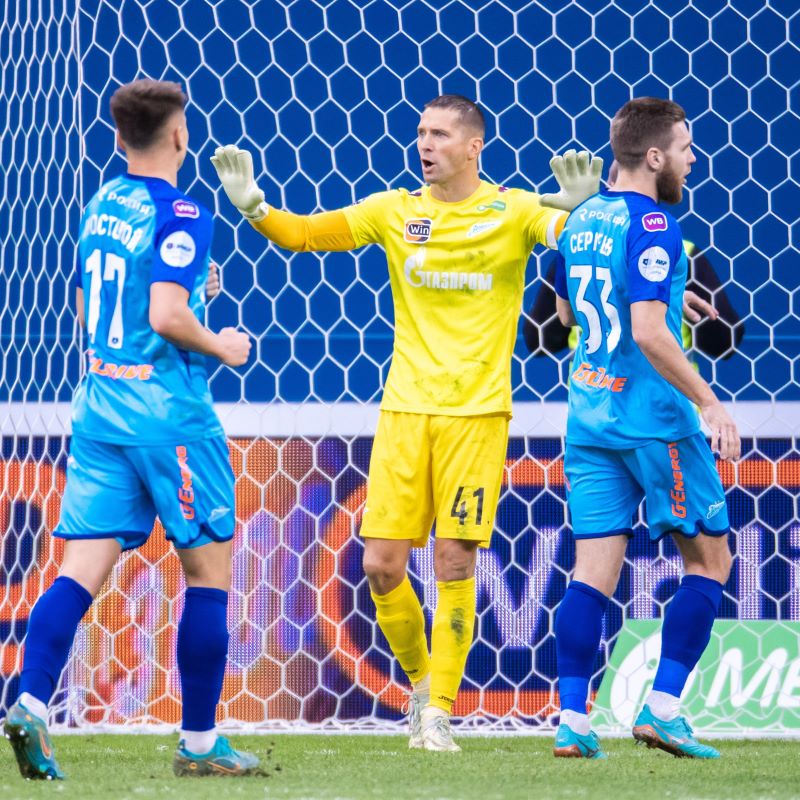
Обратная связь
Вы можете обратиться в РФПЛ с интересующим Вас вопросом или оставить сообщение (пожелание, замечание). Также вы можете сообщить имеющиеся у вас сведения о "договорных" матчах.